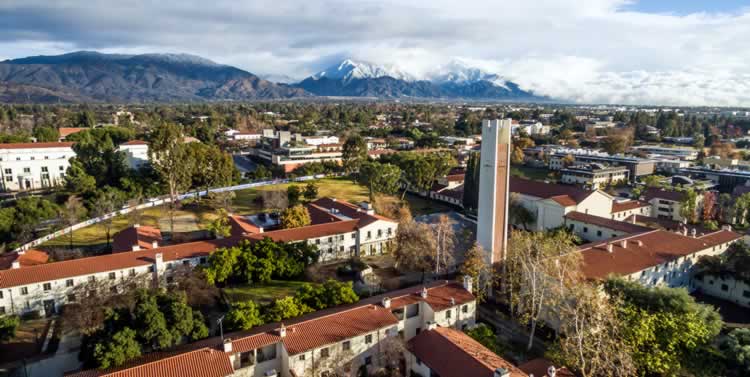Claremont, CA – Pomona College has committed itself to achieving carbon neutrality by 2030, a bold move known as CN 2030. The College is taking significant steps toward sustainability today – and more campus environmental measures are on the way.
It is bold because the College aspires to reach net-zero carbon emissions without purchasing carbon credits, a strategy that few other institutions and companies have adopted. This requires Pomona to reduce its greenhouse gas emissions to zero – and then “offsetting” an equivalent amount of any remaining emissions by retrofitting buildings, installing solar panels, investing in off-site renewables and promoting alternative transportation programs.
Related News: Pomona College Named One of the Nation’s “Top 50 Green Colleges”
The College’s plan is known as SAVE: Sustainable Action Visible Effects, and it targets areas such as energy, water, waste, transportation, buildings and landscaping, and food. The plan was crafted by the Office of Sustainability and the President’s Advisory Committee on Sustainability (PACS).
Pomona’s facilities are the largest consumers of fossil fuels on campus, producing two-thirds of the College’s total greenhouse gas emissions. “The more effectively and efficiently we can cool, heat and light our buildings, the less energy has to be produced,” says Director of Projects and Energy Management Anne Eisele. “Effective management of Pomona’s energy resources is of the upmost importance to reaching CN 2030.”
Professor of Environmental Analysis Char Miller, who sits on the President’s Advisory Committee on Sustainability, believes students are a key component to achieving CN 2030. “Student insight, energy, and engagement have been absolutely essential to the creation and completion of the SAVE plan,” he asserts. “There is nothing new about this – student voices and activism have animated the College’s decade-long commitment to sustainability, and the SAVE proposals are one more reflection of how critical their contributions have been.”
Abby Lewis ’19, who has been working in sustainability-related projects since her first few weeks at Pomona, echoes Miller’s experience. “One of the things I value most about Pomona is the way it challenges students to think critically about how we can use our education and positionality to benefit others,” she says. “SAVE reflects this ethic of social responsibility on a larger scale by using the unique knowledge and resources available at Pomona.”
Over the past two and a half years, Lewis has planned sustainability festivals, tracked utility data to measure progress towards sustainability goals and helped to prepare the SAVE plan document.
The best way for Pomona students, faculty and staff to get involved with the sustainability movement is through their engagement with the Office of Sustainability according to Assistant Director of Sustainability Alexis Reyes. “We’re always developing initiatives into new programs that can motivate our community to make better choices for the environment.”
An important resource that stems from the Sustainability Office and helps students specifically to get involved at Pomona is the President’s Sustainability Fund. Since 2007, this fund has provided more than $60,000 in grant funding to student-initiated, on-campus sustainability projects. In the past years, the PSF has funded projects pertaining to composting, water efficiency, renewable energy and waste management among others. Some of the projects include Green Bikes, SolTrain and ReCoop.
Institutionally, the College has also made strides toward CN 2030. A $2.5 million California Energy Commission grant awarded earlier this year, will enable the College to more precisely monitor, control and adjust energy use in key buildings, leading to energy savings expected to exceed 20 percent. The three-year project will enhance existing energy management systems for 10 buildings on campus and will provide for additional occupancy sensors and automated controls as well as optimization of air circulation, lights and thermostats.
The last Pomona Sustainability Action Plan, written in 2010, provided guidance for future sustainable development. Since then, the College has implemented programs that include real-time metering for electricity, gas and water on all major buildings and education and social marketing programs to promote sustainable behavior.
“To judge by the collaborative work on sustainability that the entire College has conducted since 2007—students, staff and faculty—we will hit CN 2030,” Miller says. “And when we do, we will have fulfilled our obligation to future generations of Sagehens—to make this campus and community more green, resilient and just.”

